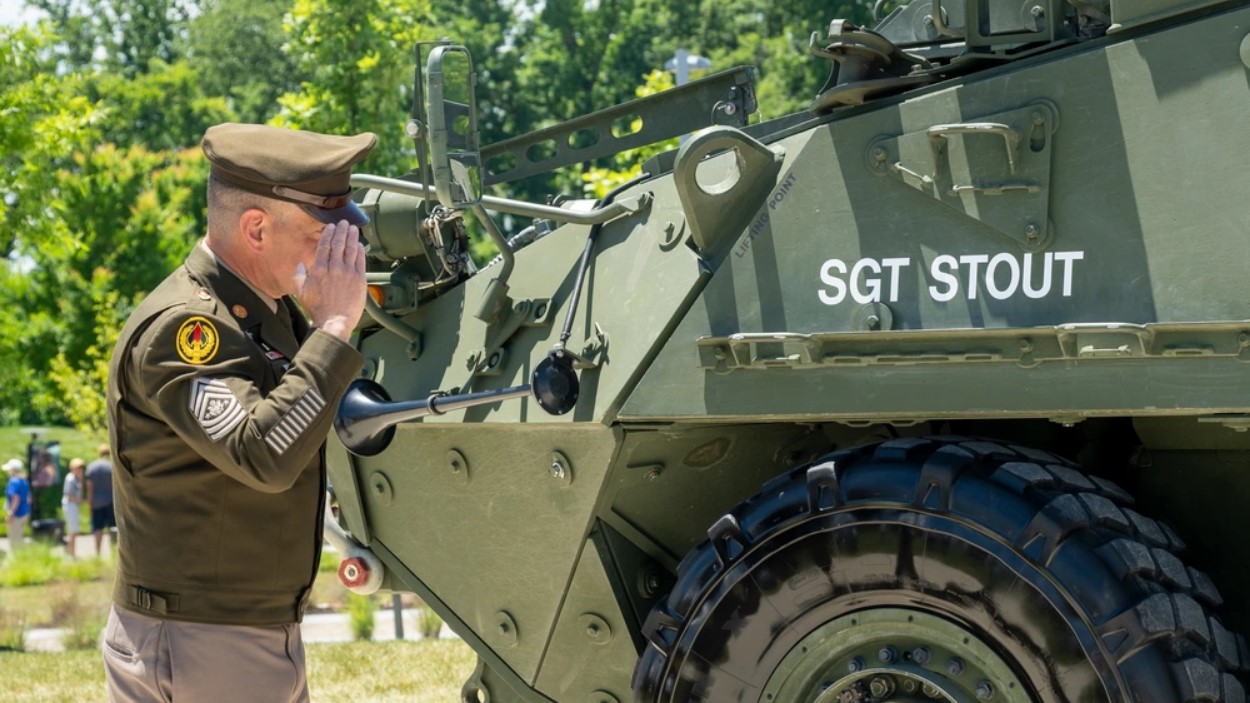

In 1970, during the Vietnam War, Sgt. Mitchell William Stout, an air defense artillery soldier, gave his life saving his comrades from a grenade. For his actions he would be awarded the Medal of Honor. 54 years later, the U.S. Army paid a new tribute to Stout, renaming its air defense armored vehicle after him.
The M-SHORAD Increment One is now the Sgt. Stout. The new name for the weapons system came on Saturday, June 15 as part of the Army’s celebrations for the service’s 249th birthday. The news was announced at Fort Belvoir, Virginia, with a Sgt. Stout bearing the name on display. Sgt. Maj. of the U.S. Army Michael R. Weimer conducted the unveiling, revealing the new name and saluting the vehicle.
“Today, the @USArmy named our newest integrated air defense system, the M-SHORAD, after SGT Mitchell W. Stout,” Secretary of the Army Christine Wormuth said in a post on X. “SGT [sic] Stout is the only Air Defense Artillery Soldier to earn the #MoH, sacrificing his life to protect his fellow Soldiers during the Vietnam war. The SGT STOUT detects, tracks and engages aerial threats & will protect our Soldiers, like its namesake, well into the future.”
The formerly named M-SHORAD Increment 1 (short for maneuver short-range air defense) is a modified Stryker vehicle, equipped with a radar system and several weapons including a Stinger missile launcher, designed to be used to intercept and repel artillery rounds, missiles, mortars and even aircraft before they can hit targets.
Subscribe to Task & Purpose Today. Get the latest military news and culture in your inbox daily.
Sgt. Mitchell Stout never saw the vehicle that now bears his name. Born in February 1950 in Knoxville, Tennessee, he joined the Army at the age of 17. He was sent to Vietnam as an air defense artillery soldier, serving with Battery C, 1st Battalion, 44th Artillery. On March 12, 1970, his unit was attacked by North Vietnamese forces at Khe Gio Bridge. Their position was pounded mortars before enemy forces moved in. One North Vietnamese soldier threw a grenade into their bunker.
“Displaying great courage, Sgt. Stout ran to the grenade, picked it up, and started out of the bunker. As he reached the door, the grenade exploded. By holding the grenade close to his body and shielding its blast, he protected his fellow soldiers in the bunker from further injury or death,” his Medal of Honor citation reads. “Sgt. Stout’s conspicuous gallantry and intrepidity in action, at the cost of his own life, are in keeping with the highest traditions of the military service and reflect great credit upon him, his unit and the U.S. Army.”
Stout had only turned 20 years old weeks prior. He was posthumously awarded the Medal of Honor four years later, by then-Vice President Gerald Ford.
The Army currently operates the air defense vehicles in three battalions and plans to add hundreds more to service by 2031.
The latest on Task & Purpose
- 82nd Airborne paratroopers cut down a 101st flag from an iconic bar on D-Day
- Navy fires USS Somerset’s commanding officer following investigation
- Two ex-U.S. soldiers met in Ukraine, then went on ‘international crime spree’
- A combat controller earned a secret Air Force Cross for battle with Russian mercenaries
- Fort Moore renames five gates for battlefield heroes like Alwyn Cashe
